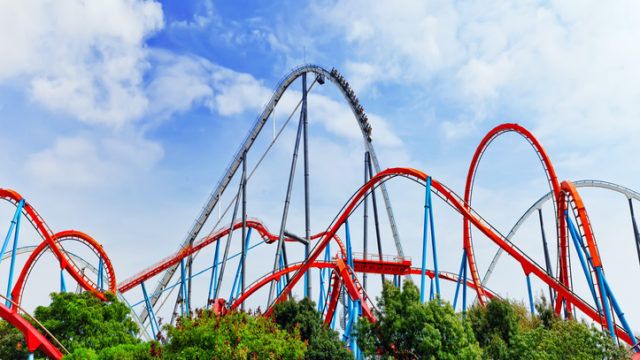At the weekend, the US president said he would increase tariffs on $200bn of Chinese imports to 25% from 10% beginning on 10 May 2019, while another $325bn of untaxed goods could also face 25% duties. The warning came ahead of this week’s scheduled talks between the US and China, which optimists hope will end the 11 month trade dispute between the two countries.
Markets took the news badly. The Hang Seng index and CSI 300 index fell as much as 3.7% and 6.3% respectively on Monday, while the offshore renminbi dropped 1.3% against the US dollar, its biggest daily decline since January 2016, according to Bloomberg.
Investors in China should expect to navigate increasingly volatile markets. As Tan Tai Hui, chief market strategist, Asia Pacific, at JP Morgan Asset Management, pointed out in a note: “In the near term, investors are rightfully worried since the lingering threat of a trade war weighed on risk assets in 2018, especially in Asia.”
Wild swings have occurred in the last 12 months. Chinese equity markets have rallied strongly for most of 2019. The MSCI China Index rise peaked at 22.85% on 10 April and the average return of the 110 China funds available to Hong Kong and Singapore retail investors reached 27.41%, according to FE Analytics data.
Last year, the figures were nearly opposite: the MSCI China fell 18.75% in US dollar terms and the average China fund slumped 22.2%.
Sharpe funds
A key measure to assess the return of a fund adjusted for its volatility — or risk — is the Sharpe ratio. It measures the excess return over a risk-free rate (usually the US treasury bill yield) per unit of deviation of those returns over a specified period.
The UBS Equity China Opportunity Fund has achieved a Sharpe ratio of 1.11, the highest (and therefore best) among China funds during the past three years. The next highest are for funds managed by Aberdeen Standard, Hang Seng (HS) Investment, Investec and Matthews.
However, the UBS, Aberdeen Standard, HS and Investec funds also have among the best cumulative returns over three years. But annualised volatility has been less impressive at around the median figure of 19% in the category.
The Matthews China Dividend Fund has the fifth largest Sharpe ratio (0.98), but it has under-performed the MSCI China Index over the last three years — 61.06% compared with 69.68% for the index. The relatively high risk-adjusted returns are due to the fund’s low volatility.
Moreover, three funds with the lowest Sharpe ratios have annualised volatility of more than the median 19%, and three of them also have negative cumulative returns since May 2016.
Arguably, absolute returns in the long run — if they’re high enough — compensate investors for fluctuations in short-term performance.
China funds with best Sharpe ratios
| Fund |
Sharpe Ratio |
Three-year cumulative return % |
Annualised volatility % |
| UBS Equity China Opportunity |
1.11 |
92.87 |
18.96 |
| Aberdeen Standard Sicav China A Share |
1.07 |
86.57 |
18.26 |
| HS China Equity |
1.06 |
94.65 |
20.21 |
| Investec All China Equity |
1.01 |
82.08 |
18.42 |
| Matthews China Dividend |
0.98 |
61.06 |
13.95 |
Source: FE Analytics. Data in US dollars, 7 May 2016 to 3 May 2019.
China funds with worst Sharpe ratios
| Fund |
Sharpe Ratio |
Three-year cumulative return % |
Annualised volatility % |
| BOCHK All Weather Equity |
-0.01 |
-7.41 |
20.10 |
| BOCHK China Golden Dragon |
-0.01 |
-5.82 |
14.70 |
| HSBC GIF Chinese Equity |
0.00 |
3.91 |
14.76 |
| Value Partners China A Share Select |
0.00 |
6.71 |
20.31 |
| Manulife China A Segregated Portfolio |
0.14 |
20.10 |
19.47 |

















